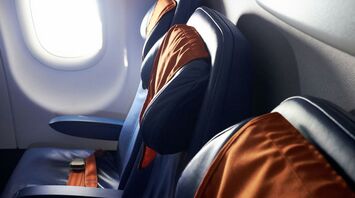Navigating the Skies: Essential Tips for Overcoming Flight Anxiety

Flying, for many, invokes a spectrum of anxieties—turbulence fears, discomfort during takeoff, or the bewildering array of in-flight noises. With summer vacations looming, James from Travel Lingual offers timely advice to transform flying from a nerve-racking ordeal to a more pleasurable part of your journey.
What Causes Flight Anxiety?
At the heart of flight anxiety is often the fear of turbulence. James advocates for checking turbulence forecasts similar to weather updates, which map out potential rough patches along your route. This preparation not only sets realistic expectations but also empowers passengers by demystifying this common aerial phenomenon. Remember, turbulence is rarely a danger to your safety; it's merely the plane navigating natural atmospheric changes.
Dietary Tips to Ease Nerves
A lesser-known trigger of anxiety is caffeine, which can heighten stress responses. James suggests swapping coffee or soda for herbal teas like chamomile or peppermint, which naturally soothe the nerves. This simple switch can significantly stabilize your mood and comfort throughout the flight.
Understanding In-Flight Sounds
The unfamiliar cacophony inside an aircraft can be unsettling. James explains that most noises, from the clunk of landing gear to routine pings, indicate normal operations. For example, a double ping often means the plane has reached 10,000 feet, signaling crew to commence their duties. Familiarizing oneself with these sounds can change them from anxiety triggers to reassuring signs of routine flight procedures.
Engage with Flight Crews for Comfort
Flight attendants and pilots are invaluable allies in managing flight anxiety. James encourages passengers to communicate their fears, as crew members can offer reassurances and insights into the flight's various stages. Additionally, many aviation professionals participate in online forums, providing another platform for nervous flyers to seek understanding and comfort.
Mindfulness Techniques Mid-Flight
Despite all preparations, if anxiety arises mid-flight, James highlights the importance of mindfulness techniques like the '4-7-8' breathing exercise. This method involves inhaling deeply for four seconds, holding the breath for seven, and exhaling for eight. Such practices can significantly calm the mind and reduce anxiety.
Visualization for Relaxation
Another effective strategy is visualization. Imagine yourself at your destination, perhaps lounging on a sunny beach or exploring vibrant streets. This mental escape can not only distract from anxiety but also enhance the overall travel experience by focusing on the excitement of the destination rather than the journey.
Flight anxiety is a common challenge, but with thoughtful preparation and strategies like those shared by James, it can be managed effectively. As you plan your summer travels, consider these tips to help make your next flight as relaxing and enjoyable as possible.



















